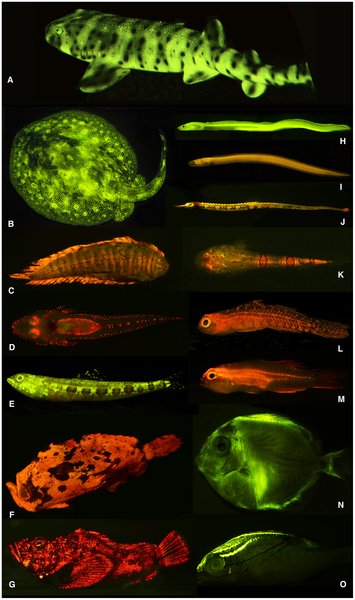Biofluorescence discovery began in Little Cayman
 (CNS): Scientists from the American Museum of Natural History have discovered that biofluorescence is widespread in the ocean and is particularly common in cryptically patterned and well camouflaged fish which live in coral-reefs. The researchers began this voyage of discovery after spotting a glowing eel on a reef in Little Cayman. The experts were filming fluorescent coral and gathering pictures for an exhibition but the fluorescent, green eel triggered a series of expeditions to the Caribbean and Pacific which led to the revelations that biofluorescence is widespread in fish and 180 species have now been counted that glow in the dark.
(CNS): Scientists from the American Museum of Natural History have discovered that biofluorescence is widespread in the ocean and is particularly common in cryptically patterned and well camouflaged fish which live in coral-reefs. The researchers began this voyage of discovery after spotting a glowing eel on a reef in Little Cayman. The experts were filming fluorescent coral and gathering pictures for an exhibition but the fluorescent, green eel triggered a series of expeditions to the Caribbean and Pacific which led to the revelations that biofluorescence is widespread in fish and 180 species have now been counted that glow in the dark.
“Our findings identify a widespread and previously unrecognized evolutionary phenomenon that provides new insights into the evolution of marine fishes and the function of light and visual systems in a marine environment, as well as providing a framework for the discovery of additional novel fluorescent proteins,” the scientists involved in the work said in a report published on the specialist website the public library of science.
Most of the fish species the scientists identified are camouflaged, so they are nearly invisible to humans. But the researchers say they think that these species can probably see fluorescence easily so can see each other during meeting. Human divers can see it, but not very well unless they shine an intense blue light on the organisms, producing higher levels of fluorescence, as the divers did on the reef off Little Cayman.
Category: Science and Nature

